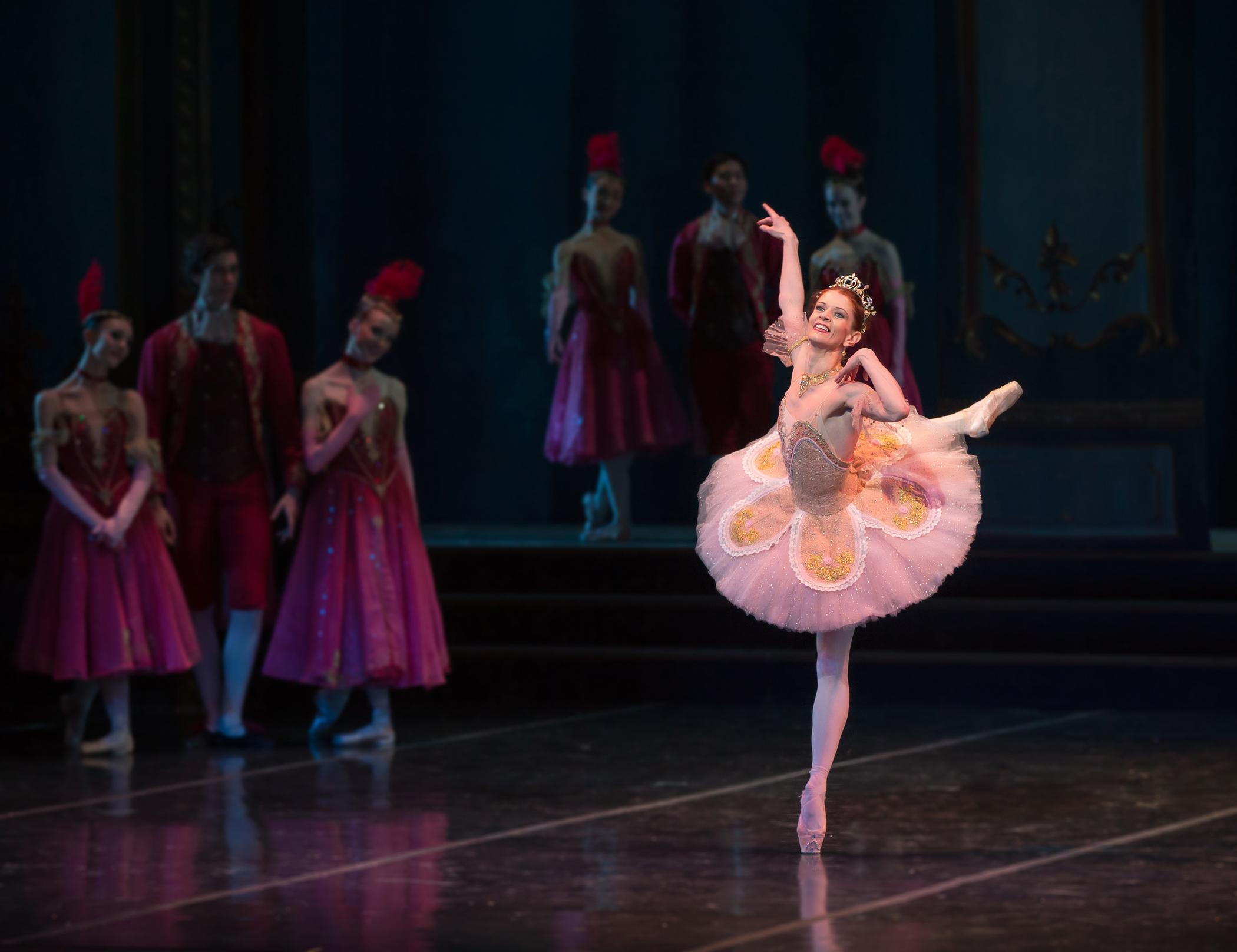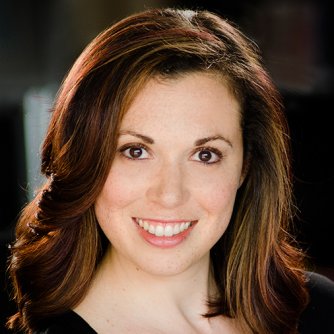
Most artistic disciplines engage spectators' sight above all other senses. Even music, when experienced live, appeals to the eyes about as much as it does to the ears.
Dance is a particularly visual medium. If the visual elements are stripped away from dance, what remains? Music? Heavy breathing? The pitter-patter of feet? Is it even of interest to the audience anymore?
With its "Radio Dances" project -- an inquiry into the potential of dance on the airwaves -- CPR's arts bureau has been grappling with these questions.
Yet CPR isn't the first organization to explore this terrain.
For the past 15 years, the Colorado Ballet, headquartered in Denver, has been offering a program that engages blind and visually impaired patrons with ballet through audio-described performances.
The Colorado Ballet’s director of education, Anne O’Connor, started leading the ballet for blind patrons programming about eight years ago. O'Connor says it's one of her favorite outreach programs the ballet company offers because it allows her to share the beauty and escapism of dance with those who can't see the movements for themselves.
The organization offers one audio-described performance at a discounted price for every story ballet in its regular season.
O'Connor feeds participating patrons live, unscripted vocalized descriptions of the performance through headphones. The educator sits high above the stage, recreating the scenes happening onstage for blind audience members and their companions using words.
O'Connnor says she stays away from technical ballet terms and focuses instead on conveying the narrative, describing the costumes and communicating the emotions expressed by the dancers.
She aims to maintain a steady stream of commentary, keeping the visually impaired patrons connected to as many moments of the performance as possible. “I follow what’s happening onstage as closely as I can," O'Connor says.
[[nid:103780 field_align=right]]Audio-described theater goers can choose to focus on O'Connor's words, or turn down her audio to pick up the natural sounds of the orchestra and dancers.
O'Connor attributes her audio-description knowledge and training to Ann Cunningham, a visual artist who was involved with the first iteration of the program and now teaches at the Colorado Center for the Blind in Littleton.
Cunningham first began experimenting with giving blind people access to the visual arts by adding texture to her own work for them to touch and feel. "Texture can evoke an emotion and narrative," Cunningham says.
To shape the Colorado Ballet's initial program, Cunningham took blind attendees backstage to speak with some of the dancers and touch the props and sets.
She even painted Barbie dolls -- textured paint for the female doll and smooth paint for the male doll -- and manipulated the figures into ballet positions to allow the blind patrons to feel the directions of the arms and legs in typical dance moves.
The aim was to help her guests gain a deeper understanding of the audio-described performance.
Anne Bay, a young woman with retinitis pigmentosa (also known as tunnel vision) participates in the Colorado Ballet's blind patrons program with her father, Paul Bay. The two are glad to be able to enjoy the arts despite Anne's impaired vision.
Anne Bay loves the the experience. "For me, it's an escape, another place to go," Bay says in an on-air interview about the program with FOX31 Denver.
Though few dance companies offer audio-described programming, the concept isn’t entirely original — at least not in the broader spectrum of the performing arts.
Joel Snyder, founder and CEO of Audio Description Associates in D.C., has been working at converting visual performances like theater, television, film and dance into audio-transcribed entertainment for more than 30 years. His company continues to fuel his passion for transcribing visual events by training writers and vocal commentators in how to provide robust audio description.
“The general public may feel, ‘how can the blind participate in visual spectacles,’” Snyder says. “Well they can, and every person deserves access to culture.”
However, Snyder concedes that the process of audibly transcribing dance for the blind requires a special "awareness of what movement means.”
Enter Esther Geiger, Snyder’s wife of 40 years and a certified movement analyst.
Geiger, who has provided audio description for companies like AXIS Dance Company in Oakland, Calif., is an expert at interpreting, describing and documenting movement.
Geiger says she first looks for “the essence of what the choreographer is trying to communicate,” whether it be a story, mood or special patterns. She focuses heavily on the dynamics of the dance rather than just the body actions.
Other Colorado cultural institutions are also employing this type of programming.
Audio Description of Colorado provides audio description for performances by Opera Colorado, The Denver Center Theatre Company and the Denver Center's Broadway series. Additionally, the Audio Description Project, an initiative of the American Council for the Blind, keeps a catalogue of all of the theaters and performing arts centers across the country that provide similar services for blind patrons.
Geiger and Snyder say audio-described dance performances are also gaining popularity in the United Kingdom, where organizations like VocalEyes make live dance accessible to the blind.
Across the Atlantic, BBC Radio 3 presenter Louise Fryer , who has authored a booklet about describing dance called "Talking Dance: The Audio Describer’s Guide to Dance in Theatre," says audio-described dance performances are "fairly occasional," but do exist.
Fryer has worked with companies like Lost Dog Dance in East Sussex, Matthew Bourne's New Adventures Dance Company, the Northern Ballet in Leeds, the Scottish Ballet in Glasgow and the Almeida Theatre in London to bring vocalization to movement.
Audio description may have value for seeing as well as visually impaired patrons.
Similar to how live-caption systems built into theater seatbacks provide opera audiences with a clearer understanding what is happening on stage through subtitles and description, O’Connor believes that audio description might be another entry point for general audiences to gain insight into dance.
O'Connor believes the program provides deeper context and helps dymistify ballet. "If they don't have a ballet background it's a behind the scenes experience for them as well," O'Connor says.
Paul Bay uses the audio description when he accompanies his daughter, Anne, to the ballet because he takes a lot away from it as well. In an appreciative email to O'Connor, Bay says he "understands what's going on much better with the earphones," which heightens the visual story he is simultaneously experiencing.
Snyder takes it a step further, saying that audio-described performances could be enjoyed outside theaters, like in the car or at the gym.
Creating this type of platform for television, film and the performing arts is a vision Snyder says he’s had for some time. “What started as an asset for folks who are blind could — if thinking outside the box — be embraced by sighted people,” Snyder says.
The Colorado Ballet is firmly on the same page.
“Dance is for everyone,” O’Connor says, explaining that this mantra is not only behind the mission of Colorado Ballet’s program for blind patrons, but for the organization as a whole.
Colorado Ballet’s next audio-described performance features "Cinderella" at the Ellie Caulkins Opera House on Feb. 22 at 2 p.m. For more information, visit ColoradoBallet.org.
More information about Snyder and Geiger's movement-based audio-description work can be found in their essay for "The Arts Collection" titled "Listening to Movement."









